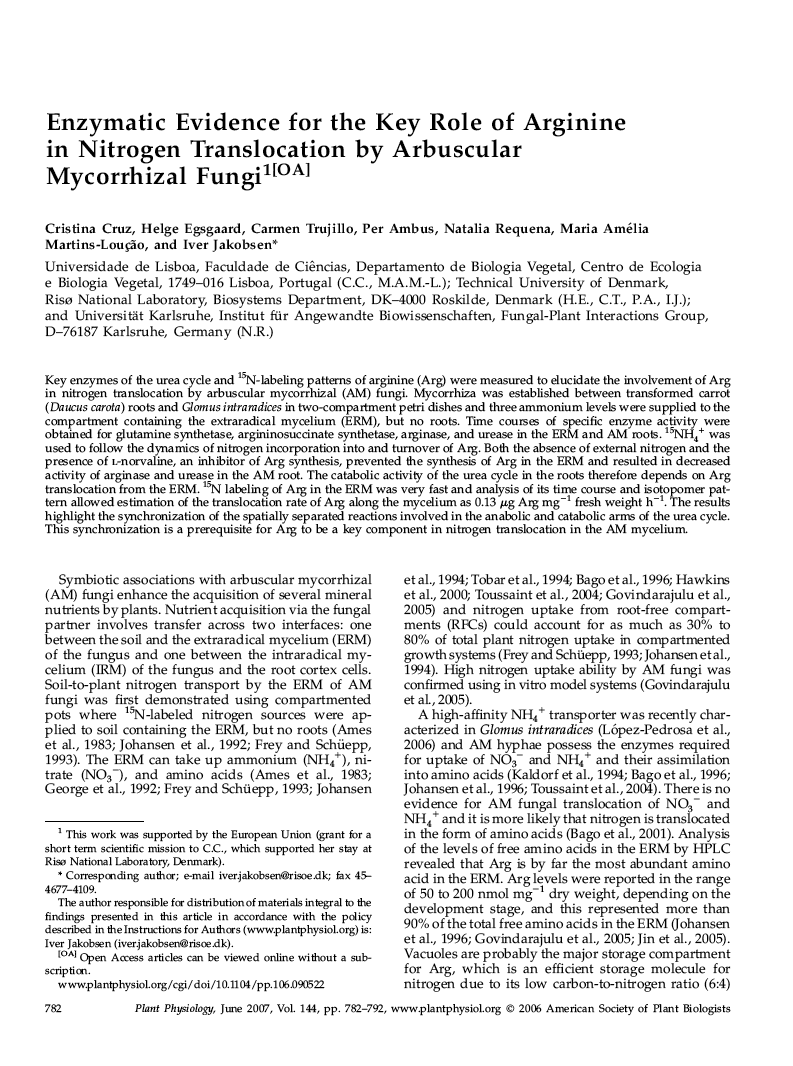Cruz et al. 2007
Enzymatic Evidence for the key role of arginine in nitrogen translocation by arbuscular mycorrhiza fungi, Plant Physiol. 144: 782-792.
Cruz C., Egsgaard H., Trujillo C., Ambus P., Requena N., Martins-Loução M.A. and Jakobsen I.
Abstract
Key enzymes of the urea cycle and (15)N-labeling patterns of arginine (Arg) were measured to elucidate the involvement of Arg in nitrogen translocation by arbuscular mycorrhizal (AM) fungi. Mycorrhiza was established between transformed carrot (Daucus carota) roots and Glomus intraradices in two-compartment petri dishes and three ammonium levels were supplied to the compartment containing the extraradical mycelium (ERM), but no roots. Time courses of specific enzyme activity were obtained for glutamine synthetase, argininosuccinate synthetase, arginase, and urease in the ERM and AM roots. (15)NH(4)(+) was used to follow the dynamics of nitrogen incorporation into and turnover of Arg. Both the absence of external nitrogen and the presence of L-norvaline, an inhibitor of Arg synthesis, prevented the synthesis of Arg in the ERM and resulted in decreased activity of arginase and urease in the AM root. The catabolic activity of the urea cycle in the roots therefore depends on Arg translocation from the ERM. (15)N labeling of Arg in the ERM was very fast and analysis of its time course and isotopomer pattern allowed estimation of the translocation rate of Arg along the mycelium as 0.13 microg Arg mg(-1) fresh weight h(-1). The results highlight the synchronization of the spatially separated reactions involved in the anabolic and catabolic arms of the urea cycle. This synchronization is a prerequisite for Arg to be a key component in nitrogen translocation in the AM mycelium.


